ALLi has a number of publications both for sale and free to its members. One such publication was written by our fabulous Director, Orna Ross. Creative Self-Publishing aims to empower indie authors to sell more books and create their author businesses their way. Today, the Alliance of Independent Authors Ask ALLi team is looking at the history of self-publishing. We also ask members what they would tell their younger pre-published selves.
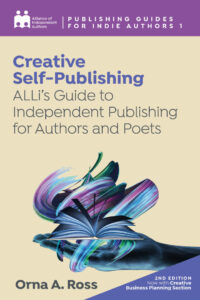 Creative Self-Publishing is a comprehensive guide to every step in the publishing process, written by the Director of the Alliance of Independent Authors, and drawing on the experience of thousands of members, from those who are just starting out to those who are staggeringly successful. ALLi members can download a free copy of the Creative Self-Publishing by logging into allianceofindependentauthors.org and navigating to PUBLICATIONS > GUIDEBOOKS. If you’re not a member, you can download a copy in our bookshop here.
Creative Self-Publishing is a comprehensive guide to every step in the publishing process, written by the Director of the Alliance of Independent Authors, and drawing on the experience of thousands of members, from those who are just starting out to those who are staggeringly successful. ALLi members can download a free copy of the Creative Self-Publishing by logging into allianceofindependentauthors.org and navigating to PUBLICATIONS > GUIDEBOOKS. If you’re not a member, you can download a copy in our bookshop here.
Please note, this is an adapted (for the blog) extract from the book Creative Self-Publishing by ALLi founder Orna Ross.
The Evolution of Authorship
We’ve lived through revolutions in what it means to be an author before, and whenever that happened, those authors who didn’t move with the flow got left behind.
For countless centuries, across pre-history and early history, storytelling and verse-making were not written but oral—a tradition that lives on in stand-up, performance poetry and storytelling gigs today. In many cultures, noble families hired bards, troubadours and balladeers to commemorate their ancestors, to praise their own activities, and to entertain and inspire their tribes with folklore, archetypal figures, religious, supernatural or magical rituals, human observations, and moral education.
The only people who had the time to write long-form works were monks, supported by their monasteries. Their manuscripts (from the medieval Latin manuscriptum, “writing by hand”) were mostly devotional religious works, but they also copied texts about astronomy, medicine, natural history, and stories about saints and bishops that Christianised older folk tales.
Medieval times saw manuscript culture transition from the monasteries to the marketplace, with the growth of cities and the rise of universities. Then came Gutenberg, and the invention of the printing press. By 1470, the transition from handwritten to printed books was well underway.
Since then, we’ve had three complete evolutions in how authors work and earn, train and trade. The author as artisan (up to 17th century). The author as artist (18th and 19th centuries). The author as professional (20th century).
And we’re now embarked on a fourth, the author as business owner or entrepreneur (21st century).
The authorpreneur.
The Author as Artisan
Publishing as we know it today began in 1439, when inventor and printer Johannes Gutenberg became the first European to use movable type. The technology had been used in Asia for some hundreds of years, but Gutenberg’s advance was a mechanical device he called “a printing press.” This used a casting system and metal alloys to press inked letters against paper or cloth, transferring the ink mark. The book, and a great deal of other printed matter, was born.
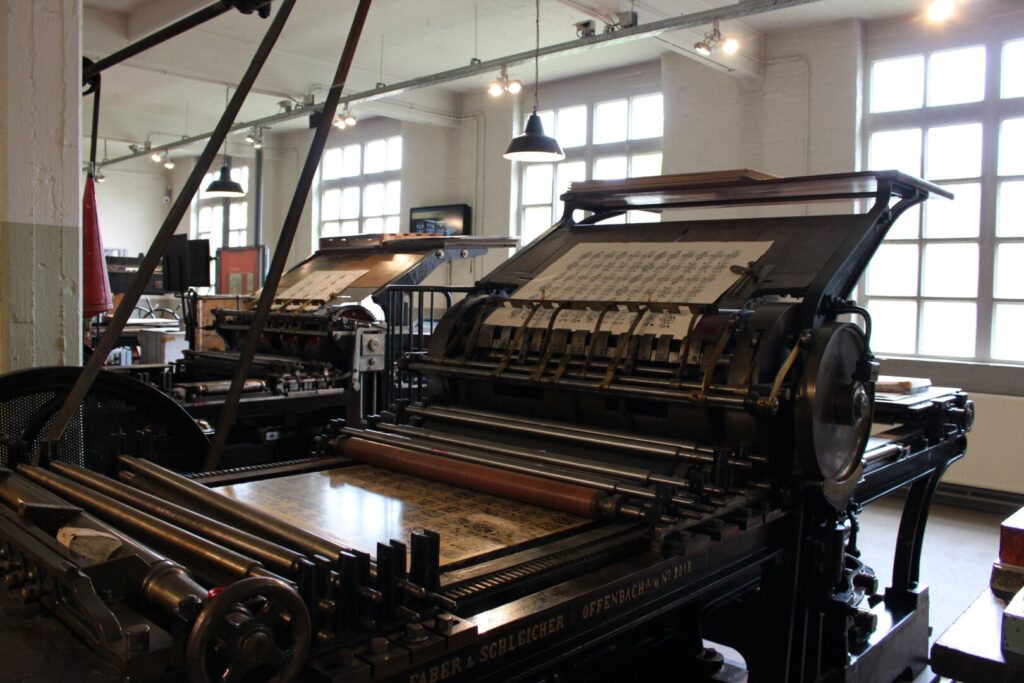
Photo by Lennert Naessens on Unsplash
It was the most significant event, culturally, in the second millennium and it invested publishers with great power. Copyright law (1710, England; 1790, US; 1871, Germany), which was at first a publisher’s right, institutionalized that power over authors.
Books could only be made using one of these large, heavy presses housed in a printing factory, which required considerable upfront investment. Occasionally, enterprising authors, like the Woolfs, invested in printing presses, but mostly the machines were owned by commercial publishing houses. They protected their investment by curating books that pleased the paying public (trade publishing), by gathering sufficient subscribers in advance to fund the print run (subscription publishing) or by charging authors for the cost upfront (vanity publishing).
Publishing flourished, particularly in Frankfurt, London and, when the Americas had been Europeanised, New York. Within this system, authors and publishers were artisans. Wheelwrights made wheels, shipwrights made ships, and poets and playwrights made poems and plays.
They served apprenticeships, like other craftsmen, learning from “journeymen” and “masters”, but they didn’t sell the products of their craft. Poetry, books and plays were commissioned by wealthy patrons to whom the work was dedicated. In the social hierarchy, writers were somewhere in the middle to lower middle class, above yeomanry and laborers but below monarch, nobility, gentry and merchants.
Today, we call Shakespeare a genius but the artisan-author was not weighted with concepts of literature or high art. Gifted and prolific writers like Shakespeare were respected but not revered as geniuses. All that came later.
The Author as Artist
The author-as-artisan lasted from the establishment of the medieval guilds until the end of the 18th century. Enter the Romantic movement and its belief in the superiority of the “real and eternal world” of the imagination.
The Romantic movement spread quickly throughout Europe and the US in the 1800s, challenging rational, “enlightenment” ideals which had held sway for centuries. Romanticism valued human senses and emotions, arguing that they were as important in understanding and experiencing the world as reason and order. It celebrated the individual imagination. Its defining symbol was the man of genius (yes, always a man), who possessed creative powers that seemed almost superhuman and whose life was devoted to the sublime beauty and emotional power called Art. Capital A.
As science demolished the beliefs of conventional religions and the church’s claim on truth was discredited, high art was where many people now turned for connection to life’s higher truths, and the author as artist was born.
In the 19th century, a lucrative commercial appetite for serialized fiction was producing wealth for publishers and authors like Charles Dickens and George Eliot. The concept of the writer as literary high-priest, solitary and unworldly, touched by vision, inspiration and mysterious gifts from beyond, was ascendant. The influential novel, Scenes of Bohemian Life,by Henri Murger and the stage shows and operas that followed depicted four broke, unemployed and heartbroken bohemians, starving and dying for their art. Such artist-authors continued to rely on patrons to support them while they produced their masterpieces. Think Lady Gregory and WB Yeats, Sylvia Beach and James Joyce.
Romanticism’s ideals and the enduring search for individual rights and liberty still fuel artistic movements today. The image of the solitary and devoted starving artist who toils on a masterpiece from a garret in Paris or London or New York still exerts a powerful hold on the collective imagination.
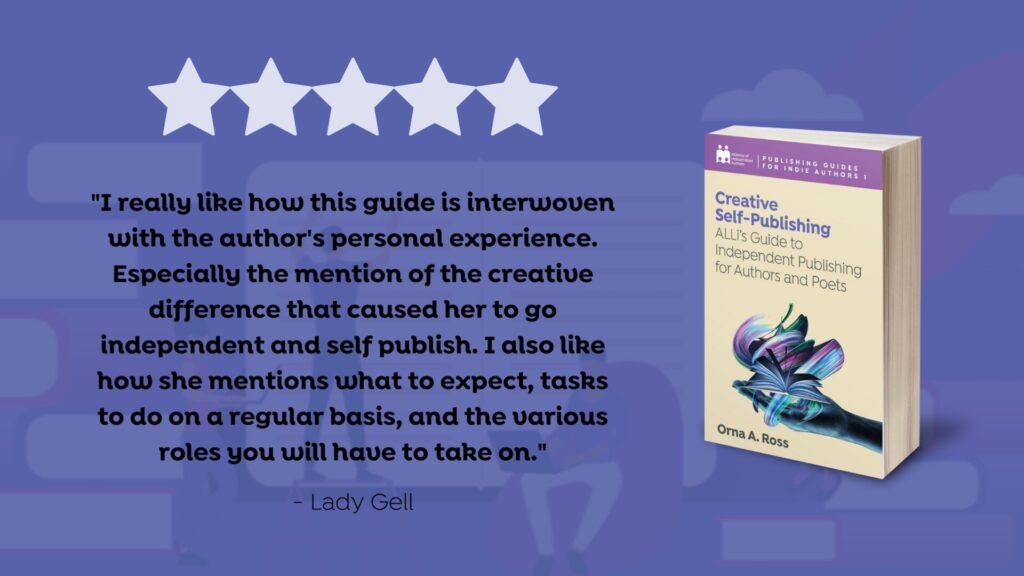
The Author as Professional
In the 20th century, with the creation of English literature studies, authorship became educationalized and institutionalized. Aspiring writers went to university, read English, and if they were lucky then got a job that allowed them to write and, perhaps, also teach.
Their career might be salaried or, more often, freelance, but the writer was paid like any employee or contractor: they exchanged time, labor and expertise in return for money. Their progress depended on some existing member of the literary establishment: a boss, an institution, a publisher, a prize-giver. Authors were professionals, separated into the successful—those with a job, a book contract, a relationship with a newspaper or magazine—and the rest.
This era is now passing, but many of us writing today have grown up in it and it still exerts a powerful hold on how we think about ourselves and our work. We still talk of writing careers, for example, even as professional income and opportunities—which were always competitive in media and publishing—dwindle and authors set up in business.
The Author as Entrepreneur
As we have seen, advances in internet technology, software, machine learning, artificial intelligence and other technologies are enabling authors to reach potential readers at a speed and scale that was unthinkable in the artisan, artist, or professional eras. Today, writers can cheaply set up in business to produce, distribute and sell work such as novels and nonfiction books, TV or radio series, podcast dramas, novellas, chapbooks, booklets, feature films, documentaries, short stories, essays, videos, poetry, talks, poems and flash fiction.
Business-minded indie authors and authorpreneurs integrate all their efforts—from the longest book to the shortest social media ad—into their authorial intent and their own author business.
This represents a significant mental and emotional change that many authors and poets have yet to grasp. They may already be self-publishing and running an indie author business, but they are unconsciously carrying passed-down, no-longer-true ideas that unconsciously influence how they meet their work each day and week.
- The artisan author believes success is about making great products and pleasing a patron. “I’ll succeed if my books are good enough.”
- The artist author thinks success is about achieving a perfection of truth and beauty and pleasing the critics. “I’ll succeed if I make art.”
- The professional author believes success is being recognized by gatekeepers, pleasing literary and publishing companies, organizations and institutions. “I’ll succeed if I prove myself.”
- The entrepreneurial author believes success is a thriving creative business. “I’ll succeed if I inform or inspire, excite or delight enough readers.”
We all carry aspects of artisan, artist, professional and entrepreneur. But how we approach our work will vary hugely, depending on which conception of “author” we’re working from.
Author Identity
Many of us carry within, consciously or unconsciously, outworn definitions of authorship and success. We are living in the age of entrepreneurial author while thinking of ourselves as artisans, artists, or professionals.
That’s fine if it’s a conscious choice and we’ve figured out a way to make our preference work for us. There is no “correct” way to be an author, there never was and there never will be. Artisan authors are still found at craft fairs and faires (see MakerFaire.com) everywhere, selling their books and other innovative products and projects, alongside other creativepreneurs. Professional author careers and jobs are still to be had, even if they are fewer and further between. Artist authors still take themselves off to Paris to drink cheap wine and work on their masterpiece—if only for a gap year.
Problems arise when our thoughts are embedded in one concept of authorship, while our actions are trying to lead us another way—if we’re locking ourselves out of today’s opportunities, by clinging to ideas and ideals that belong to the past.
If you are finding it difficult to finish a book, or to sell books that you’ve already published, it may have little to do with surface, obvious issues and everything to do with your concept of authorship not being integrated with your actions.
Author Empowerment
Centuries of conditioning by publishing culture are not overturned in a decade, but many authors are already embracing the principles of Self-Publishing 3.0. Authors are already selling directly from their websites, already publishing widely in three digital formats (e-book, print-on-demand and audiobook), already distributing through an increasing variety of outlets and in a variety of languages, already selectively licensing non-exclusive rights to publishers and other rights buyers.
Readers too are beginning to appreciate the new publishing landscape, relishing premium products and opportunities for access and closer connection with authors, becoming more comfortable with purchasing directly from creators, joining crowd-funders, becoming patrons, paying monthly subscriptions for personal newsletters. As I write, at the beginning of 2021, new technologies are intensifying these trends.
For authors the implications go beyond the ability to publish their own books into the launching of significant creative businesses that offer various literary formats, products and services. This is a topic covered more in the book.
Making that choice means adopting a certain way of thinking about yourself and about publishing. As the 2020s and Self-Publishing 4.0 unfolds, new technologies and innovations are impacting the author community, including subscription models, artificial intelligence, virtual reality, the blockchain and others that we don’t have names for yet. Those who are best equipped to ride this wave of change are authors with:
- A diversity of outlets through which they publish “wide.”
- An e-commerce website to sell their books and other products and services directly to readers.
- A willingness to work with other indie authors in similar genres and niches to mutually grow impact, influence, discoverability, reach, and income.
- A diversity of formats, products, projects, and services.
- A determination to limit the rights, terms, and territory of any rights licensed to others.
- An insistence on fair partnerships and publishing contracts.
The History of Self-Publishing: What ALLi Members Would You Tell Their Younger Selves
Amanda Davey
“What I would say is ‘Don’t plan publication day for the day the books arrive in print, that needs to be well beforehand and so does the website”
Catherine Holland
“It doesn’t necessarily have to be as complicated as it first seems. Decide what you want to achieve, and take the steps necessary to meet your own goal – not the measures of ‘success’ set by others.”
Fanny Garstang
“Don't give up. Take a break if needed before trying again. It might mean next time round your book is even better.”
Debbie Young
“That with self-publishing, the author is at the centre of the process which makes it hugely empowering. If it was good enough for Virginia Woolf/Beatrix Potter & Peter Rabbit/ Charles Dickens' A Christmas Carol etc, it's good enough for me!”
Kay Seeley
“Don't panic, don't stress and don't compare yourself to others. It'll all come out right in the end.”
Becky Clark
“No matter where you are on the journey, there are people ahead of you and behind you. Reach one hand forward to ask for help, and one hand backward to offer help. Both will be welcomed.”
Karen Heenan
“That there are an amazing number of moving parts in this business, and there's a really good chance you're not going to get all of them right – or even know about them all – straight out of the gate. To not feel bad about that, but keep moving, right the next book and do better next time. Because you should always be thinking about next time.”
Debbie Nutley
“Be true to yourself and let your voice be authentic. Editors, advisors and the like should bring clarity to your voice, not change it.”
Morgen Bailey
“Be patient. Overnight successes usually took at least a decade to be so.”
Derek Slaton
“Remember that this is a marathon and not a sprint, especially when it comes to audiobooks. Hold on to your rights without exception, don't do “royalty shares” with audio. Pay for EVERYTHING out of your own pocket so you retain rights. The stuff you put out now will still be on sale 5-10-30 years down the road, and have the potential to earn you money that entire time.”
Suzanne Lalor
“If you want to make money, find a commercial genre that you enjoy reading and feel you will love writing. Use a good editor from the start.”
Victoria LK Williams
“Start that Newsletter! I waited 5 years before I did, such a wasted opportunity. Listening to those who have been there before you will give more benefits than you can imagine.”
Joanna Penn
“Keep going. It will take longer than you think to get where you want to go, but the journey is worth it.”
Dan Holloway
“I would have told my younger self to stop trying to please everyone and work really hard on a smaller niche I felt really happy in – find a space that works and own it, and then you will always be the go-to person in that space as things grow around you.”
“Believe in yourself. Your work is more interesting than you realise. Don't be afraid to go for it. (This advice pertains to me as a person as well as a writer.)”
Alison Ripley-Cubitt
“Self-publishing isn’t about trying to do every task involved with publishing yourself. It’s about putting together the best team you can afford.”
Phillipa Clark
“Find a word or phrase to hold onto when doubt kicks in. Persist. Believe. Trust yourself. Something which resonates for you. My own little mantra these days is around persistence and having just celebrated five years indie published on Monday, I know it was a good choice.”
“Find a support network. For example, there are plenty of Facebook groups with people willing to help – ALLi being the best of course! Don’t be afraid to engage and learn from other authors who have experienced everything you will go through as an Indie author.”
Sally Hanan
“Getting the cover right is everything. If it doesn't immediately pull people in or let people instantly know the genre, and if it doesn't look clear in a thumbnail, it's not ready. And just because you love Canva doesn't make a cover print ready. I create possible covers there but always have a cover designer feel out what I'm going for and give it a professional touch. People diss Fiverr and say you can't get good work for a few dollars. 100% not true. I've had fantastic covers, trailers, and typesetting done by designers in foreign countries. And get over your love of learning everything on your own through trial and error. You can save months of your time by taking a few online classes on how to typeset in InDesign and Word, or on how to use Photoshop and other Adobe basics.”

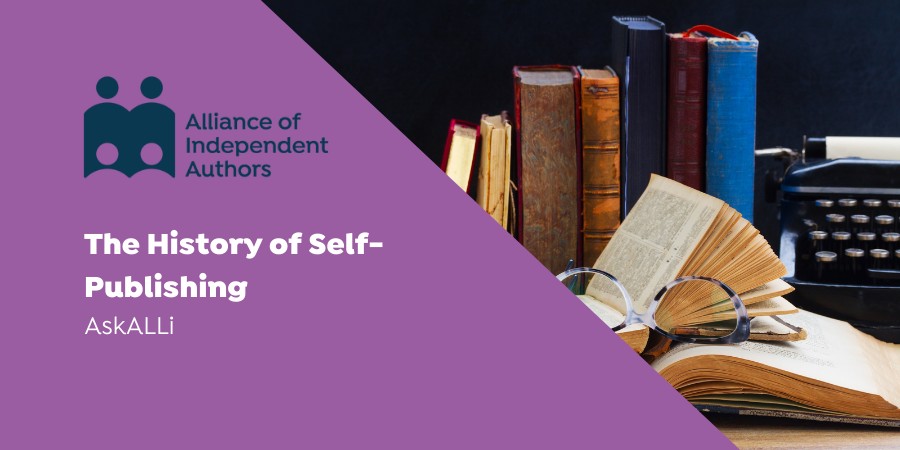
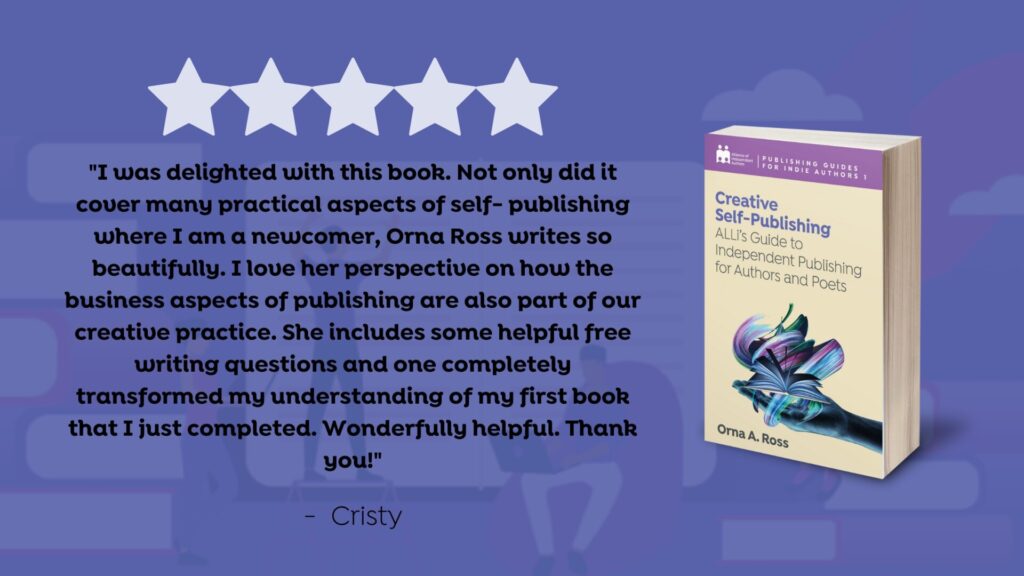



Excellent article!